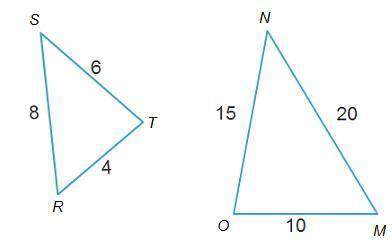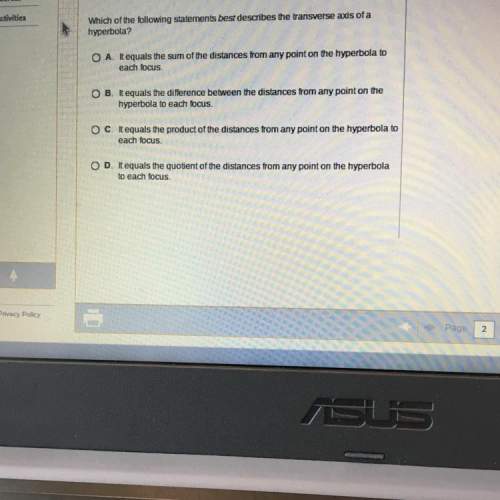
Mathematics, 16.04.2020 21:58, wolfiewolffromsketch
Shelly states that the triangles below are similar. Which proportion supports her statement?
StartFraction 8 Over 4 EndFraction = StartFraction 15 Over 10 EndFraction
StartFraction 8 Over 10 EndFraction = StartFraction 4 Over 20 EndFraction
StartFraction 6 Over 4 EndFraction = StartFraction 20 Over 10 EndFraction
StartFraction 8 Over 6 EndFraction = StartFraction 20 Over 15 EndFraction


Answers: 1
Other questions on the subject: Mathematics

Mathematics, 21.06.2019 14:30, princessvaeh2625
The perimiter of a rectangle is 70 inches the legneth of the rectangle is 5 less than 3 times the width of the rectangle what is the width of the rectangle
Answers: 3

Mathematics, 21.06.2019 16:50, Kianna000
Suppose that the price p (in dollars) and the weekly sales x (in thousands of units) of a certain commodity satisfy the demand equation 4p cubedplusx squaredequals38 comma 400. determine the rate at which sales are changing at a time when xequals80, pequals20, and the price is falling at the rate of $.20 per week.
Answers: 3

Mathematics, 21.06.2019 20:30, maxy7347go
Does the function satisfy the hypotheses of the mean value theorem on the given interval? f(x) = 4x^2 + 3x + 4, [−1, 1] no, f is continuous on [−1, 1] but not differentiable on (−1, 1). no, f is not continuous on [−1, 1]. yes, f is continuous on [−1, 1] and differentiable on (−1, 1) since polynomials are continuous and differentiable on . there is not enough information to verify if this function satisfies the mean value theorem. yes, it does not matter if f is continuous or differentiable; every function satisfies the mean value theorem.
Answers: 1
Do you know the correct answer?
Shelly states that the triangles below are similar. Which proportion supports her statement?
Questions in other subjects:



Chemistry, 03.06.2021 23:30



English, 03.06.2021 23:30











